education
Healthcare Vendor Fair at Batavia Downs’ Paddock Room
Lecture and slideshow presentation at Richmond Library on “Batavia Past and Present” sponsored by The Landmark Society
Notre Dame Open House
Oakfield Museum and Research Center Open Hours
Le Roy senior awarded full scholarship to Yale University

Le Roy's Alex Wynn is Yale-bound. The high school senior has won a full scholarship to the prestigious university from QuestBridge.
Wynn is among 918 students selected by QuestBridge for a 2017 National College Match scholarship that sends high-achieving, low-income students to top universities.
U.S. News and World Report ranks Yale as one of the top three universities in the nation. Yale counts among its graduates presidents (both Bushes, Bill Clinton, Gerald Ford), world-renowned actors (Meryl Streep, Paul Newman, Jodie Foster), and business leaders (Indra Nooyi, CEO of Pepsi, John E. Pepper Jr., CEO of Walt Disney Co.), along with leaders in many industries and professions.
Alex said she learned about QuestBridge during her junior year and decided to join more than 15,000 other high school students who would seek a QuestBridge scholarship.
The process included a visit to Yale, which helped convince Alex that Yale was where she wanted to go if given the chance.
"Yale has been my top school ever since I was afforded the opportunity to visit last June," Alex said. "Despite my love of the school, its low acceptance rate made me believe that I never would actually be accepted, let alone be offered a full scholarship. Words cannot describe how grateful I am to be able to attend my dream school for the next four years, nor can they describe how incredibly excited I am for this amazing opportunity."
She will major in Chemical Engineering.
"I feel extremely fortunate to have the opportunity to work with a student of Alex's caliber in the first year of my career as a school counselor," said Austin Dwyer, a counselor at Le Roy High School. "On the very first day of school, Alex introduced herself to me and informed me she was applying to a National College Match Program that included some of the most selective schools in the entire country.
"Alex has been an outstanding self-advocate for herself, especially throughout the extensive application process of this program. Alex is truly a 'go-getter' when it comes to accomplishing something, whether it is in the classroom or an extracurricular commitment, and has been a great role model for our students."
Principal Tim McArdle said Alex has worked hard and the school is proud of her.
"Alex's commitment to academic excellence coupled with a passion for participation in music, athletics, and other extracurricular clubs, along with service in our community has made her an ideal Oatkan Knight whose journey is inspiring," McArdle said. "She has pushed herself in the classroom to always challenge her intellect and fulfill her love of learning.
"Evidence of her success can be found all over our school from helping launch our Knights' Tech Desk to excelling in her AP courses to performing in our marching band and musical pit. We are very excited for her and her family; it is truly life-changing, and we are so proud! I would like to thank QuestBridge for their commitment to college-bound students across the country."
Photo: Alex Wynn, taken Saturday night at Le Roy's Christmas Tree lighting.
Lunch-N-Learn Series at Le Roy HS exposes students to career opportunities
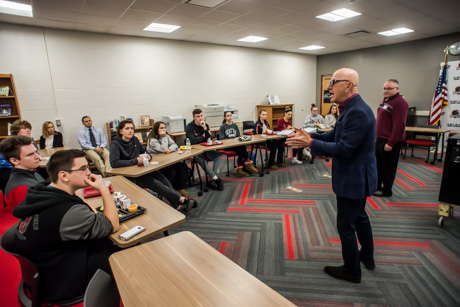
John Jakubowski, workforce development consultant for the Genesee County Economic Development Center, and Chris Suozzi, VP of business development for GCEDC, visited Le Roy High School today as guests of the Business Education Alliance's Career Lunch-N-Learn Series.
Jakubowski and Suozzi talked about career opportunities in STEM (Science, Tehcnology, Engineering and Math) fields, advanced manufacturing and nanotechnologies, and what it takes for a student to enter those career paths.
"The BEA Career Lunch-N-Learn Series is a tremendous opportunity for our students to interact with professionals in different fields, and we can't thank Karyn Winters enough for her organizing efforts and partnering with us," said Principal Tim McArdle. "It is these experiences that allow our students to focus on their future and learn about the many options they have.
"Today's speakers from GCEDC gave our students a chance to learn about amazing opportunities right here in our backyard so that we can retain the talent we are developing. I really commend Mr. Suozzi and Mr. Jakubowski for their efforts in promoting the WNY STAMP and also educating our students on career advice."
The purpose of the series, McArdle said, is to expand beyond the traditional career day and expose students to information about various careers throughout the year.
"We have taken the traditional one day 'career day' and infused it in and throughout the school year," McArdle said. "Each of our teachers are tasked to host one professional to speak to their classes in an experience we call Career Chats.
"Each Career Chat speaker also stays for an after-school session in the library open to all students. Our students also participate in off-campus field trip opportunities visiting local business/industries through our Student Success Center and staff initiated opportunities."
Another resource available to students and parents is Naviance, in which counselors work with students on career and self-exploration throughout the school year both at school and at home.
To prepare the local workforce for jobs like what is anticipated at WNY STAMP -- Western New York Science and Technology Advanced Manufacturing Park -- the district has partnered with Byron-Bergen Central School in a Soft Skills Training program.
The program is being funded through a grant from an America’s Best Communities Award that the Towns of Le Roy and Bergen won in 2015 and is coordinated with Jakubowski and Loren Penman. Seniors in both districts are exposed to four different lessons from local professionals this spring.
"Our goal is to not have one week go by without our students having a chance to hear from a professional in the field. It is vital we maintain this important commitment for the development of our graduates."
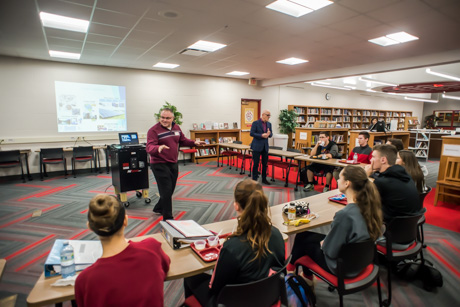
Byron-Bergen students learn what they can do right now to change the world
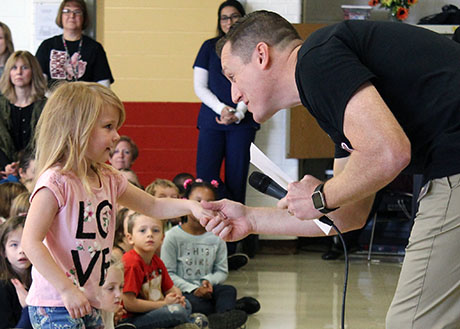
Press release:
Students at Byron-Bergen Elementary School gathered on Nov. 27 to honor the school’s Students of the Month and to learn about giving back and making a difference.
Guest speaker Holly Paramjit Sembhi, a 2014 Byron-Bergen graduate, joined in with her personal story of how one person, who was just like each of them, has found the power to help change the world.
Sembhi, now in her final year of working toward a bachelor’s degree in Biomedical Science from RIT, began her education and her love for helping people in kindergarten at Byron-Bergen Elementary. She currently works part time at Rochester General Hospital and plans to get her master’s degree as a Physician’s Assistant in Neurosurgery. She also volunteers with Global Brigades, a medical relief organization operating in Honduras.
She urged students to believe that they can each make the world more awesome, starting right now.
“It is exciting for me to come back to a place I love,” she said. “I hope that I can inspire these kids, to make them really want to help others. Maybe they will look back someday and remember this moment. I’d like to think that this might start them on their own paths to making the world a better place.”
The monthly Character Assembly also included musical numbers performed by talented students and staff members, and a discussion of what students can do in the community, from supporting homeless children and families to remembering our seniors and the elderly. Throughout the month of December, classes will participate in a range of service-learning projects that will have an impact our local and global communities.
The Students of the Month were: Peyton Alejandro, Jake Carlson, Tyler Chapman, Kendall Chase, Leah Cramer, Daniels Dawson, Robert Dix, Nixon-Riley Eichenberger, Chesney Fregoe, Harlow Galves, Lila Graff, Stella Hassett, Hunter Jarosinki, Carter Kuipers, James Lamb, Taylor Lundfelt, Amelia Meier, Parker Moore, Bradley Pocock, Colin Rea, Ava Smith, James Starowtiz, Travis Thomas, Mariah Williams and Rena Wilson.
Top photo: Principal Brian Meister congratulates one of the Students of the Month, kindergartener Nixon-Riley Eichenberger.
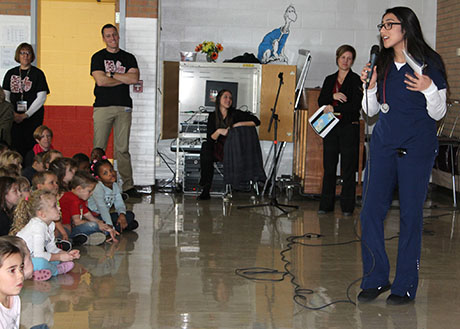
Visiting speaker Holly Paramjit Sembhi (2014 Byron-Bergen graduate) tells students that they don’t need to wait until they are older—every one of them can do awesome things right now.
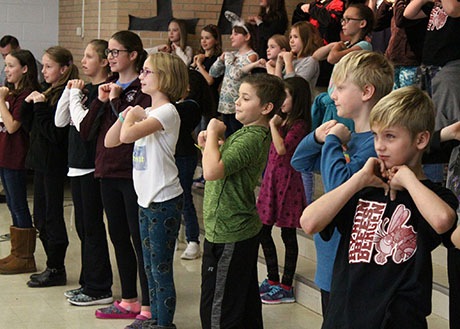
G.V. Educational Partnership teams up with Finnish company to pilot new game for U.S. schoolchildren
Press release:
The Genesee Valley Educational Partnership is pleased to announce a new partnership between its School Library System and an international game company called LUPO.
Based in Helsinki, Finland, LUPO publishes "Space Adventure," a narrative storytelling game that allows players to role-play as they complete collaborative tasks while on a space mission.
The goal of this project is to lead local classes in exploring game design as a way to promote critical thinking and creative expression of student understanding.
Over the next year, School Library System staff will pilot this game in component school districts as this game’s primary rollout in the United States.
SLS staff will provide training for librarians and teachers.
“LUPO’s 'Space Adventure' will be a strong addition to our existing library of over 400 games selected for instructional use in the classrooms of the Genesee Valley region,” said SLS Director Christopher Harris.
“ 'Space Adventure' combines creative storytelling with science and community planning to create a narrative experience that can be customized by the teachers to address different areas of the curriculum."
For more information about LUPO visit lupoworld.com
###
The School Library System is a program of the Genesee Valley Educational Partnership. The Genesee Valley Educational Partnership operates as a Board of Cooperative Educational Services offering shared programs and services to 22 component school districts located in Genesee, Wyoming, Livingston and Steuben counties in New York state.
Le Roy students and staff helped support 45 local families for Thanksgiving
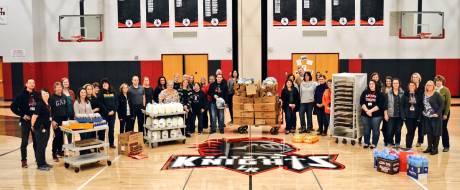
Press release:
This fall, Le Roy Jr-Sr. High School, in conjunction with our Le Roy PRIDE Character Education program, ran our 5th annual Thanksgiving Feast Drive. This seventh-through-12th-grade effort supported 45 of our own families, equaling close to 200 people. Staff participated in four Turkey Tuesday Dress Down days by making a weekly monetary donation. Close to $1,000 was raised and used to purchase the turkeys, milk, eggs, bread and ingredients for pumpkin pies made by our FACS teacher and students!
Students participated in our Stuff The Turkey Food Drive where grades partner up and compete against each other bringing in food under different theme days - Day 1: Macaroni Madness, Day 2: Can Jam, Day 3: Baking Bonanza, Day 4: Starch Fest, and Day 5: Kitchen Sink. The competition was fierce this year with the ninth- and 10th-graders making a huge final day push to win with 706 donated items. Grades 8 and 11 brought in 702 items and grades 7 and 12 had 675 items for a grand total, and new Stuff The Turkey Food Drive record, of 2,083.
Last week, our counseling staff, school resource officer, principal, and assistant principal made the deliveries to our families. We would like to thank ALDI in Batavia and Tops and Save-A-Lot in Le Roy for their donations and contributions as well!
From Principal Tim McArdle:
"We cannot thank our school community enough for their ongoing support of this effort. Five years ago we started by supporting 12 families and each year the need continues to grow in our community, and our students and staff step up and meet this need head on. Our staff continues to go above and beyond when students are in need, and we are so appreciative of their ongoing support of ALL students!""This effort is a great lesson for our students about giving back and the importance of helping others in their community. This focus is a common theme in our school and a character trait that is so important."
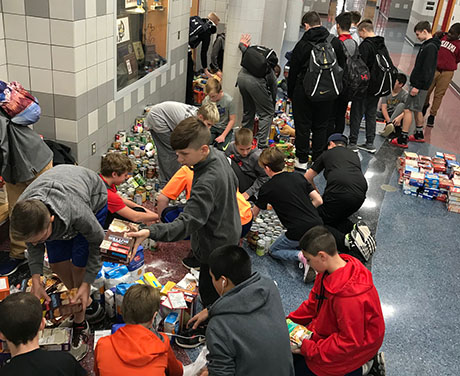
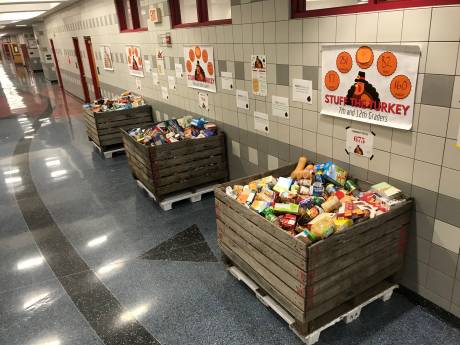
Two Genesee County award winners honored at NY Community College Trustees' annual conference
Press release:
The 63rd Annual Conference for the New York Community College Trustees (NYCCT) was held last month in Syracuse and it provided a unique opportunity for Genesee Community College.
In her dual role as chairman of both GCC and also NYCCT Board of Trustees, Laura J. Bohm welcomed more than 100 participants to the event including sharing tips to get the most out of the three-day conference entitled "Trustees Making an Impact!"
Meanwhile, GCC student trustee Benjamin B. Martis, a native of Curacao in the Caribbean, was immersed in learning all the responsibilities, laws and resources available to enable trustees at every level to do their essential work.
As a voluntary nonprofit association, the NYCCT was established to strengthen the effectiveness of New York's community college trustees and represents the appointed board members who govern the 30 community colleges in the State University of New York (SUNY) system.
The annual conference is an important part of the group's mission, and this year two awards were presented to Genesee County. The Genesee County Economic Development Center (GCEDC) was presented with the Edward J. Pawenski Business/Industry Partnership Award, the highest recognition that can be bestowed upon a business or individual recognizing partnerships and commitments with a community college. In addition, Craig Yunker, founding partner of CY Farms in Elba, received the Benefactor Vision for Tomorrow Award recognizing his longstanding support of the College and particularly his leadership efforts to help raise funds for development of the GCC's new Student Success Center and Richard C. Call Arena.
In other business last Monday evening (Nov. 13), the Board of Trustees:
Approved the minor updates and rewording of the following Board policies: Graduation and Release of Official Documents (Policy 3002); Signatory (Policy 5012); Authority for President to Accept Grants and Contracts (Policy 5012.1); Child Care Center Facilities (Policy 6003); and Security and Access to Campus Facilities and Security Consideration in Maintaining Campus Facilities (Policy 6009).
Heard of the successful reaccreditation of GCC's Veterinary Technology Program with the American Veterinary Medical Association under its Veterinary Technician Education and Activities Committee.
Heard Student Trustee Benjamin Martis report that GCC's Student Government Association is actively supporting students and even rebranding the SGA to further its abilities to foster successful projects that could potentially span multiple years. A new Facebook page has also been introduced and a new monthly "mixer event" is being planned to encourage the exchange of ideas and information leading to more collaboration across campus.
Heard William Emm, executive vice president for Planning and Institutional Effectiveness reported that the "punch list" items for the $25 million construction of the Student Success Center and the Richard C. Call Arena is nearing conclusion, and the new configuration of the parking lot is almost completed.
GCC student named a 2017 Coca-Cola Leader of Promise, gets $1,000 scholarship

Kimberly Curry, an accounting student at Genesee Community College, has been named a 2017 Coca-Cola Leaders of Promise Scholar and will receive a $1,000 scholarship.
Curry is one of only 207 nationwide Phi Theta Kappa members who will receive this scholarship. Nearly 1,000 applications were received this year. Recipients are selected based on their academic achievement and demonstrated leadership potential.
The Coca-Cola Leaders of Promise Scholarship Program helps new Phi Theta Kappa members defray educational expenses while enrolled in associate degree programs. The Coca-Cola Scholars Foundation provides $200,000 in funding for these scholarships with $25,000 set aside for members who are veterans or active members of the U.S. military. The remaining amount is supported by donations to Phi Theta Kappa Foundation and provides Leaders of Promise Global Scholarships, earmarked for international students.
Curry proudly served in the Army from 1987-1991 and then was called back up again during Operation Desert Storm.
"This scholarship really means a lot to me, especially considering my time in the armed forces. It is one way to ensure that veterans like me can obtain the college credentials we need to succeed and give back to our communities," Curry said.
This scholarship foundation also encourages recipients to participate in Society programs to develop leadership skills and position themselves to become future leaders in their communities. The scholarship funds help to provide these opportunities as well. Curry certainly took advantage of this chance and joined a new organization in Rochester called the Southside Junior Sting, part of the local Pop Warner organization.
The Southside Junior Sting had one primary responsibility; to ensure that every child or young adult who wanted to participate in organized football had the financial means to do so. The group organized fundraiser events throughout the community to make sure that every person could play. During her time with this group, Curry met some amazing and dedicated leaders and connected to her community and the kids they were helping.
With more than three million members in nearly 1,300 chapters across nine nations, Phi Theta Kappa is the premier honor society recognizing academic achievement of community college students, helping them to grow as scholars and leaders. Visit www.ptka.org to learn more about Phi Theta Kappa.
GCC will hold its annual Discover the Stars Scholarship Reception tomorrow afternoon
Press release:
On Tuesday, Nov. 14, the annual Discover the Stars Scholarship Reception will take place in the Conable Technology Building's south lobby and in room T102 on GCC's Batavia Campus at One College Road in Batavia.
This reception brings together GCC's scholarship recipients, members of the College Board of Trustees and Foundation Board of Directors, College administrators and the many donors who made the recipients' academic dreams a reality. The reception will begin at 4 p.m., followed by a special presentation at 4:30 p.m.
Genesee Community College Foundation scholarships recognize academic excellence, make higher education accessible to all students, and promote economic vitality in the GLOW region. There are nearly 200 scholarships available at GCC and applications, which can be completed online, are accepted throughout each year.
For nearly 20 years, the Discover the Stars event has been a special occasion that grants scholarship recipients and their families, Foundation and Board of Trustee members and community leaders the opportunity to meet, chat and celebrate stories of success and career achievement, while inspiring the next generation of students.
The 2017 celebration will feature guest speaker, Kathleen "Kitty" E. Maerten, who graduated from GCC in 1975. She earned a bachelor's degree from The College at Brockport (SUNY), her Master of Social Work degree from Florida State University and a Certificate of Advanced Study in Educational Administration also from SUNY Brockport.
Maerten spent her long career working with children and their families in a variety of settings including as a marriage and family counselor and a school social worker. She served as the chairperson on the Special Education Committee and as site administrator for the Alternative High School in the Lockport City School District. In 2000, Maerten became the school principal at Alexander Central School District, and from 2008 - 2017 she served as the superintendent.
A 2003 graduate of Leadership Genesee, she also served on the Board of Directors at GCASA and the Board of Directors of the Genesee County Business Education. Currently, Maerten is working with a steering committee to begin a Leadership program in Orleans County. She and her husband, Max, are enjoying retirement and when they aren't out exploring the beautiful countryside, they spend time with their two sons and four grandchildren.
In addition, the family of the late, Ann Reid will share a special presentation honoring her life, musical legacy, and her philanthropic contributions to GCC's Scholarship Program. Reid, born in Buffalo, graduated from Immaculata Academy in Hamburg and earned her Bachelor of Music from Boston University. Reid appeared in "Funny Girl," starring Carol Lawrence, and played "Sheila" in the Italian production of "HAIR" in Rome, Italy. Reid traveled the world developing her singing and composing career with jobs in Saudi Arabia and Communist Poland.
In the late 1970s, Reid found herself in Los Angeles and earned her Master of Arts in Music with a minor in Conducting from California State University Los Angeles. Reid's love for teaching and her students brought her to GCC in 1996. She received the Chancellor's Award for Excellence in Scholarship and Creative Activity in 2004 and retired in 2013.
Composer, musician, and former GCC professor of Music, Reid's contributions to the performing arts and music programs at GCC impacted the entire community. Her original production, "AElinor," premiered in 2011, marking the first time in 62 seasons the Genesee Symphony Orchestra premiered the work of a local composer. In her honor, the Richard and Maribell Scholl Reid Musical Theatre Scholarship, named after Reid's parents, was established and continues to provide financial assistance and encourage Fine and Performing Arts students to pursue their dreams and passions, as Ann Reid did.
For more information about Discover the Stars Scholarship Reception, or to RSVP, call (585) 345-6809, or email: discoverthestars@genesee.edu.
St. Paul Lutheran School celebrates 20 years of educating elementary students with Alumni Reunion Nov. 26
Press release:
This month St. Paul Lutheran School in Batavia is celebrating 20 years of educating children in and around Batavia, from prekindergarten to fifth grade. On Sunday, Nov. 26, there will be a special Alumni Reunion & School Celebration!
The worship service will take place from 8:30 to 9:30 a.m., immediately followed by the reunion outside the main church entrance at 31 Washington Ave.
There will be old photographs and DVDs to see and reminiscing with former schoolmates and teachers.
For questions, contact Mrs. Ann Werk, school principal, at 343-0488.
Photos: Open house at GCC
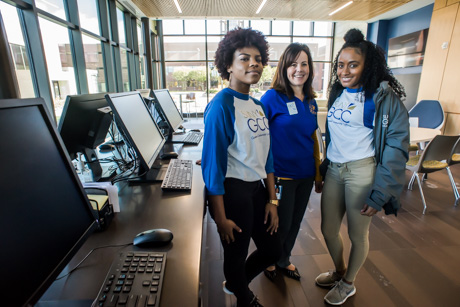
Genesee Community College held an open house for prospective students today. It's the first one since the Student Success Center and Richard C. Call Arena opened and some 200 potential students, often with their parents, attended the event.
The next one is from 9 a.m. to noon, Saturday, Nov. 18, to coincide with SUNY Financial Aid Day.
Top photo: Navaily Petrona, Susan Ryan, and Stephany Mercilia. Ryan is assistant director for admissions and Petrona and Mercilia, both from Curacao, were student guides for tours.
Below, Zoe Skarzenski, along with her mother, Susan, and father, Terry, from Findley Lake, stopped by the student bookstore to check out some GCC-branded apparel.
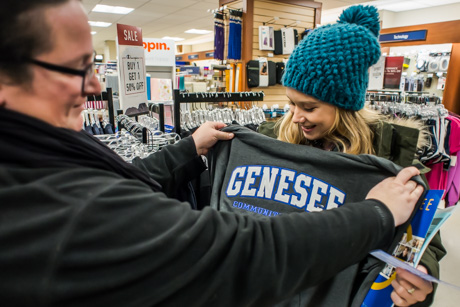
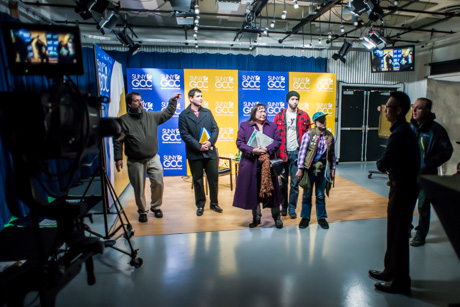
A tour through GCC's TV studio.
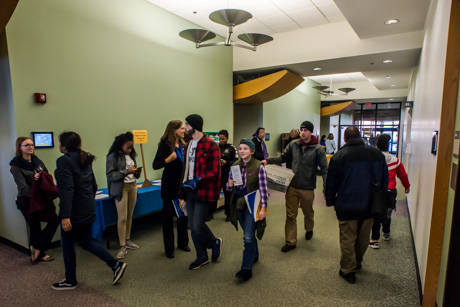
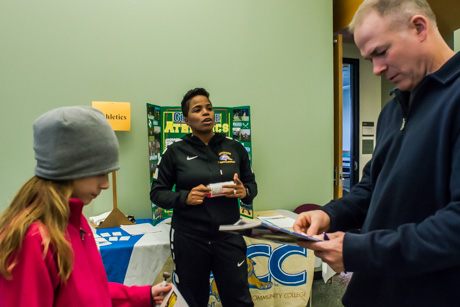
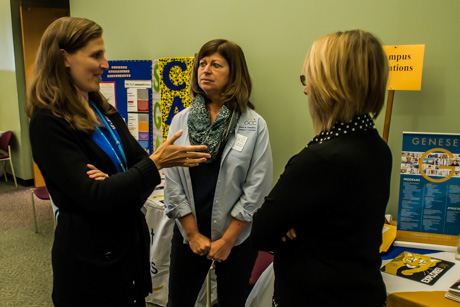

Historians gather at GCC to debate controversy around Confederate monuments

Like human beings, it’s complicated, multifaceted and a work in progress.
Historians who gathered at Genesee Community College on Saturday to discuss monuments and statues of the Confederacy made that point clear.
Other issues emanating from that controversial topic were more opaque.
Should Confederate monuments be disassembled and put into a museum? Or stand as they are and “contextualized” by the addition of explanatory signage or a juxtaposing anti-memorial?
By what criteria do we evaluate the people honored? Are they more than their worst traits? Do they contribute to the public discussion beyond their role in the Confederacy?
While more and more Americans wrestle with those kinds of questions, by all accounts, the current debate is fraught with emotion. There’s a quick-tempered divisiveness that too often rapidly devolves into shouting matches or worse, culminating in the nadir at Charlottesville.
Derek Maxfield, Ph.D., GCC associate professor of History, brought together a three-man panel to weigh in on Confederate monuments. It was the last session in a day spent talking about the short shrift that history, especially local history, is getting in New York classrooms, the stifling trend of "teaching to the test," and disaster preparedness as it relates to safeguarding historical artifacts.
Speaking were:
- (Via Skype) Chris Mackowski, Ph.D., who lives just outside Frederickburg, Va., but teaches online as professor of Journalism and Mass Communications at St. Bonaventure University in Cattaraugus County.
- Michael Eula, Ph.D., Genesee County historian, who is a retired academic who spent 30 years in the California Community College system.
- Danny Hamner, GCC adjunct professor of History for the past 15 years in Batavia.
They cited a series of articles which have been published online at a site called "The Emerging Civil War,” which offers fresh and evolving perspectives on America’s deadliest conflict. (To visit, click here.)
Mackowski provided a launching point for the sake of the discussion at GCC. He penned an article from a free speech perspective for the Emerging Civil War series because it interested him as a journalism professor, and other authors had dibs on other aspects of the controversy.
“As soon as you start saying, ‘Take down that statue because it’s offensive to me,’ to me, that’s a First Amendment issue,“ Mackowski said. "Here you have artistic expression and people saying ‘That art is offensive.’ It’s always been my understanding that one of the purposes of art is to provoke. So, of course, in some ways it’s going to be offensive to some people.”
Eula said “I couldn’t agree more that art as embodied in these statues is by definition provocative. In fact, it should be provocative. First and foremost, we need to remember that when we look at these monuments, and the discussion surrounding them, we are talking about more than monuments.
“We’re talking about how we conceive of American history…of our civil society. I think each side engaging in the conversation needs to take a moment to try and understand the other perspective, the other side."
Hamner said that although he’s disturbed by the emotional response against Confederate artwork, he diverged with Mackowski on two points.
Firstly, the question of public art versus private expression.
He said he associates the First Amendment with personal displays of art: putting a Confederate flag on your porch.
“But when it comes to public art, to me it’s not a question of free speech, it’s a question of pure politics,” Hamner said.
Therefore, Hamner advocates having a true political process to work through so that opinions are heard and a “rationale discourse” can take place regarding each monument or statue on a case by case basis.
Secondly, whether there is “instrinsic value” in a work of art strikes him as “moving the goalpost a little bit.”
Hamner said the tougher question that does need addressing is: “Do these people have intrinsic values that we need to respect – outside of their association with the Confederacy?”
Mackowski, acknowledging he purposely wrote from the viewpoint he did because it was not covered by others in the online series, agreed with his colleagues.
As we wrestle with the notion of what makes somebody worth honoring, a fear – particularly in pro-Confederate quarters – is “Who’s next?” Mackowski said, and while some argue this is a slippery slope, he allowed that “we probably need to evaluate some of these other folks.”
What do these guys represent?
It was at this point that host Maxfield brought up the stark argument, in The Emerging Civil War series, proferred by Julie Mujic (pronounced “MEW-hick”), Ph.D., adjunct professor of History at Capital University in Bexley, Ohio.
She argues that Confederate statues commemorate treason and ought to be removed.
“To sustain Confederate monuments sends the message that it’s necessary to celebrate the effort, even when that effort was malicious. The monuments must come down. They represent inequality, oppression…”
Mackowski said Mujic’s stance strikes at the heart of the whole argument: "What do these guys represent?”
“As you know, the history of the war was rewritten as soon as the war was over. And instead of it being about slavery, it starts to be about ‘noble sacrifice’, ‘doing your duty’, and ‘honor’ and ‘states’ rights’.
“So today, a lot of people refuse to look at people who served with the Confederacy as being traitors, but in fact, that’s what they were. … So do you honor that or not? That’s a very important question that we don’t have a common context for.”
Hamner has a problem with both Mujic’s argument AND the defenders of the monuments for essentially the same reason.
He cites a catch phrase, even used by President Trump in a tweet, that “You can’t change history.”
He said people tend to think of the past as objective, factual and unchanging; our historical interpretation of that past as either right or wrong.
The problem is, that “implies that the process was somehow supposed to end.”
The deal is, reinterpretation of the objective truth is going to happen with every generation, as knowledge evolves, more facts come to light, consensus migrates.
As they all conceded, historians and the citizenry can’t change the past, but the interpretations of the past must be constantly requestioned.
"I’m always struck by the curious statement that ‘We’re revising history'," Eula said. "My reaction is that ‘History is always being revised.’ "
Having said that, Eula noted that at the time most, if not all, of the statues and monuments were erected, there was no national debate about it, no consensus.
“We need to keep in mind the question: Is the removal of a monument erasing history or merely calling our attention to what is now a different interpretation of that moment in time?”
Forgotten nearly always in these discussions, Eula pointed out, are the poor whites who had not been supportive of the Confederacy from the get-go.
A whole year before the North passed a draft law forcing mandatory armed service, the Confederacy did so, which tells historians the South was not getting the numbers of volunteers for The Lost Cause that many today would like to imagine.
And the slave-holding elite, later the pardoned ex-slave-holding elite, still got the run of the place after the war.
That meant former slave owners got to become the local bankers, and pass vagrancy laws, which continued the bondage of freed men, Eula explained.
This informs today’s understanding of the time in which the statues came to be.
“My point is that it isn’t simply a straightforward proposition as to whether these statues are works of art protected by the First Amendment; whether or not there are contemporary implications for race relations in our own day.
“These are products of a specific historical moment in a specific part of the country.”
Impact Beyond the Confederacy
Eula also said many of the Confederate generals had no significance beyond their military career. That raises the question, for example, does this form a slippery-slope logic for the removal, say of the Washington Monument? No, Eula argues, because although Washington owned slaves, “his significance lies in his contribution to the construction of a new nation.”
“These (Confederate) monuments are dedicated to the memory of an elite South…seeking to destroy the United States in the name of slavery…that was as busy trampling on the rights of poor whites as it was on the slaves."
And, if the decision is made to get rid of a monument, which whether you like it or not is a “historical document,” then the process to do so must abide by some local, identifiable political construct.
To just tear down a monument, Eula said, is akin to someone walking into the Genesee County archives and saying “Well, I don’t like what’s said on this particular piece of paper, therefore, I’m going the shred it.”
“Just like for any other historical document, we have to find a way to preserve these. Whether or not they should be preserved in a public space, that’s another issue...
“These are the kinds of issues that need to be sorted out before we can make any final decision on whether or not any particular Confederate memorial stays or is replaced,” Eula said.
The operative phrase is “particular piece,” says Mackowski.
“To look at Confederate monuments as a big, monolithic one-size-fits-all sort of issue is absolutely the wrong way to go about it,” Mackowski said. "But because tempers are flaring and emotions are high, that’s sort of how people are approaching it.”
Instead, a lot of questions should be asked to inform a reasoned debate, say historians.
Who was the monument put up to honor? Why was it put up? Who put it up? When? What was the intent?
Moreover, a statue of Stonewall Jackson is a very different thing than a statue in the courthouse square that honors the local county boys who got drafted into a regiment and sent off to war.
Plus, consider that community values change, and over 150 years, they change a lot.
A book by David Lowenthal called “The Past is a Foreign Country – Revisited” describes, the panelist said, how today’s values differ vastly from those of yesteryear.
So, it behooves people today not to try and look at history through the lens of “presentism.”
“I think we’re not really talking about history at all when we talk about these monuments, we’re talking about memory,” Mackowski said.
The Sorry State of Historical Literacy
This observation prompted Maxfield to mention a problem he calls “historical literacy,” or more precisely, the lack thereof.
“I don’t want to come off as elitist about this, but the fact of the matter is we are spending less and less time in the public schools teaching history,” Maxfield said.
“We’re shoving it out of the curriculum and, in fact, Confederate history in particular, CANNOT be discussed in some Northern states.”
And vice versa; Texas comes to mind.
“That’s an unhealthy phenomenon, when you can’t look at the other side of an argument,” Maxfield said.
Meanwhile, Hamner is concerned that while people scurry to make sure history’s getting correctly written and that context is being correctly construed, there’s a gaping window open for some people to ram their political agendas through.
“One only has to look at the way Donald Trump defended the artistic value of these monuments, when he has a l-o-n-g history of development in New York City of tearing down artwork after artwork to make room for his projects.”
To wit, the construction of Trump Plaza is said to have resulted in the destruction of an Art Deco-style store that featured windows created by Spanish surrealist Salvador Dali.
None other than the Metropolitan Museum of Art in New York City waited in eager anticipation of what was supposed to be the fantabulous donation of massive Art Deco bas-relief murals from that store, only to find they had been knocked down and destroyed by Trump’s crew so as not to prolong the project by a week and a half.
The point?
“We have to be very careful that we are separating people who are using some very valid argument to shield ulterior political agendas,” Hamner said, adding “…I would hate to see a very important, intelligent conversation like this being used in a way as a shield for what I consider very, very base intentions.”
It also is not helpful that the general public does not seem to understand what the discipline of history is all about.
“A lot of what historians do is really philosophy,” Maxfield said. “Until we have the opportunity to teach more critical thinking and encourage more exploration, I’m afraid what we‘re doing, especially in the public schools, is narrow and narrow and narrow.”
Facts and Sensibilities
It’s important to remember, too, Mackowski offered, that in history, a set of facts does not equal a set of facts. Two plus two does not equal four when you are dealing with facts in history, he said.
Fact: The Union Army moved in to occupy Fredericksburg in the spring of 1862.
But that fact is viewed vastly differently by two diarists who wrote about it. One was a member of the social elite who wrote about it being this great calamity; “The Yankee invaders are here; this is awful.”
An emancipated slave saw it differently. He wrote “This is the greatest day of my life. This is the greatest thing to ever happen.”
Thus, adding together different historical perspectives over the span of a century and a half is something that can’t be “summed up” tidily.
“Before this degenerates into mindless philosophy,” Maxfield told Saturday’s attendees, garnering some comic relief, how about considering one solution offered by a historian: Leave all the monuments as they are, but just improve the interpretive signage.
How other nations have addressed the issue of historical monuments was something that Eula explored when asked to participate in the GCC panel.
“The whole issue of holocaust memorials was an obvious one” to look into, he said.
One approach he found was memorials constructed next to other memorials with different interpretations attached to them.
In the United States, for example, you could put up: a monument next to the existing one that denotes the number of slaves murdered during their enslavement; or the number of soldiers who were murdered at the Confederate prison of war camp at Andersonville, Ga.; or “the number of poor whites who couldn’t buy their way out of the draft, who didn’t support the planters’ war, and who paid for that with prison sentences,” Eula said.
Coming up with a county-by-county count of the dead, might be a way of “softening the effects of the monuments with regard to those who find them objectionable,” the official county historian said.
At this juncture, Hamner said he sees agreement about the panel’s strategies and tactics; but it comes down to his original point: the need to separate the historical element from the political one.
“I would hate to take The Lost Cause interpretation monument and then simply encase it in a new interpretation and say ‘That’s the official interpretation. Now it’s done.’ "
There is no "One Conclusive Truth"
Hamner's desire is to protect the PROCESS of public history, not the monuments themselves.
“If the political process in that community says ‘We’re putting it in a museum.’ Ultimately, I’m for that," Hamner said. "What I’m really worried about is understanding the particularities of each monument, maintaining the process of investigation, and the willingness to revise our thinking – every generation, every person.”
Which begs the question, in Eula’s mind, as to WHY we necessarily have to have ‘ONE CONCLUSIVE TRUTH’?, he asked, slapping his hand on the table as he spoke each word.
“The minute you do that it leads you down, historically, a path of dogmatism that tends to shut down democracy, that tends to shut down the expression of free ideas.”
What if we as a society never have agreement?
“So what! … Why can’t we agree to disagree and have a civil discourse?” Eula asked.
The absolute declaration of what the correct interpretation is, was called totalitarianism in the 20th century, Eula reminded the audience.
Remember, there was a time when you were either for or against McCarthyism. You were either for or against the United States entering the purported "war to end all wars,” “The Great War” -- World War I.
“That’s when a lot of innocent people get hurt and killed, for reasons to me that are absolutely senseless,” Eula said.
Mackowski countered with a “get real” argument.
Philosophizing aside, and since the notion of “contextualization” of Confederate monuments is so kosher among historians, Mackowski wanted to play devil’s advocate.
“If you’re driving down Monument Avenue in Richmond (Va.), it’s basically an auto park,” Mackowski said. “Who’s able to stop at one of those traffic islands in the middle of traffic and read context about Stonewall Jackson or Jeb Stewart or Jefferson Davis?”
Context is actually difficult to pull off in some places, he noted, and maybe even if you could pull it off, does it really match up to these giant men on giant pedestals?, he asked.
And let’s say you decide to leave it in place, what about vandalization?
To that, Maxfield chimed in with something that a historian from Texas A&M University had to offer, and that is that location does matter.
Andersonville, for example, is cited as the South’s version of a 19th century concentration camp; a place where 11,000 to 13,000 federal troops meet a grisly end under brutal conditions.
If a monument stands in a place such as this, it should be kept there, the scholar argued, even if publicly funded, because going TO that site or a battlefield is voluntary. The same cannot be said for someone who must drive past a statue that offends you every day to get to work and there’s no other route to go; that’s involuntary.
Plus, on a battlefield, historians and/or Park Service employees are there to help with knotty questions and interpretations, right?
Wrong, says Mackowski, in fact Park Service employees have largely been silent on the issue. Because taxpayers pay their salaries, they can’t really delve into it.
Some of the people best equipped to comment on this discussion have their hands tied because of politics, Mackowski said.
Nor has academia been free from constraints, Maxfield noted.
Removing monuments on a battlefield, which is essentially a giant cemetery, raises “other complexities,” according to Eula, who stressed the need for balance.
“Because we have people there, regardless of our own idealogical beliefs, who ended their life there, most likely involuntarily.”
He went on to recall how memorials to Stalin and Lenin came down in Eastern Europe in the middle of the last century.
Growing Dissent
“My point here is that, as much as it pains me to say this, there could be enough popular dissent out there regarding all these statues that no amount of discussion or legislation could change.
“It could be that our own society has so changed in the span of the last two generations in particular, that there is this huge upsurge demanding a removal of some of these monuments in the way that we saw in the Soviet Union with regard to Stalin.
“And I’m not convinced historians, even the most well intentioned, are really going to have a whole lot to say about this.”
This perspective prompted Mackowski to ask why this moment, why now?
Eula maintains that some of this popular dissent has been growing for a long time, back to the 1960s and the feelings spurred by the morass of the Vietnam War.
“It’s what I started off by saying – this is not simply about Confederate monuments,” Eula responded. “There are deeper currents here at work, and these didn’t begin recently.”
The groundswell of attention paid to the subject these days could, in part, stem from harsh “economic realities” many people face, which historians have largely been insulated from.
This means that “some of our discussions are frankly going to prove irrelevant” because they are not, rightly or wrongly, in alignment with what the populace is feeling, thinking or demanding, Eula said flatly.
Hamner said, on one hand, there’s this sort of academic/historical question of how best to contextualize Confederate artwork. Then on the other hand, there’s a deeper human question of WHY historians do what they do.
The thing that matters most of all, he said, is that – regardless of whether a decision is made to keep or do away with a monument – that a process is followed to get to the decision.
Hamner contends that the camp that says "Leave it alone. Don’t touch them" is made up of people who want to freeze time and not confront the complexity of heritage.
They are reducing human beings to their best qualities – like bravery – “a disembodied sort of character trait.”
But the opposite camp is also reductionist – making complex humans villains and the epitome of their worst characteristics.
For an example of the former, Mackowski showed a picture of the statue of Stonewall Jackson at Manassas National Battlefield Park in Prince William County, Va. (See inset photo above.)
He said Jackson is made to look like “Arnold Schwarzenegger on a Budweiser Clydesdale" … like this God of War – a horseman of the Apocalypse. In reality, Jackson was slight, modest and “would have been appalled to be portrayed this way.”
In other words, monuments are less about facts and more about “how people want to remember the Stonewalls.”
What About Bias?
A student asked the panel, “So if interpretation is the key solution, how do we select the accurate interpretation for each monument without being biased?”
The panel's collective wisdom: Finding “the objective truth” and “the right interpretation” is doomed.
Rather it is consensus itself, by interpreting and reinterpreting, that will painstakingly get you “closer and closer” to what the pluralistic outcome ought to be.
Yet Maxfield said even that is elusive because “there are progressive historians that believe progress in humankind is possible – you get closer and improve – but other historians disagree with that." That dichotomy also shapes interpretation.
Eula said he thinks it’s not possible for a historian not to be biased. So you be as objective as you can be by acknowledging your bias, “your theory.”
Since “just the facts” are not the whole story, “you look at evidence based upon your starting point. But the responsibility of the scholar is to let the audience know: This is my starting point.”
Before you can get to an interpretation of a monument, for example, you have to get people to “understand that history is relevant,” Mackowski replied.
“Unless you can get people to understand that history is not what happened in the past, but rather why the past is influencing what is going on RIGHT NOW, people aren’t going to get to that (new and improved) interpretation.”
It’s that whole issue of general historical illiteracy that Maxfield had lamented earlier.
To make meaningful headway, people have to have discussions, the historians said, not ongoing yelling matches.
“Or 140 characters of saying ‘You’re wrong!’ " Mackowski concluded.
Photos: Batavia CTE open house
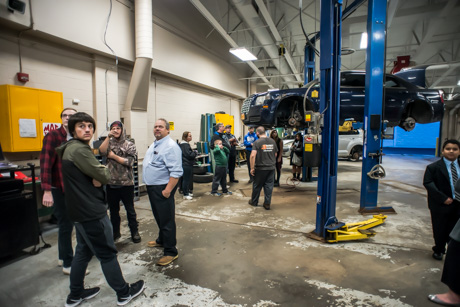
Parents of students and parents of prospective students were able to tour Batavia CTE (BOCES) last night and see firsthand what some of the course offerings are that help prepare students for careers in law enforcement, welding, manufacturing, agriculture, auto repair, cosmetology, culinary arts and other careers.
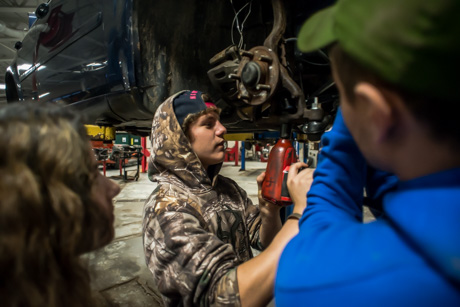
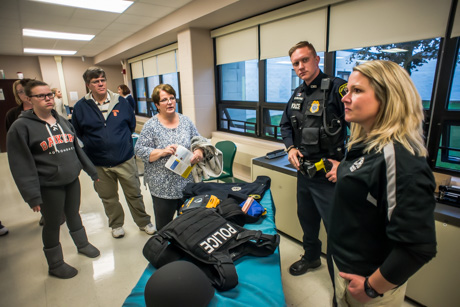
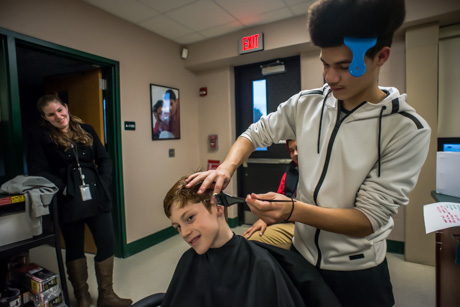
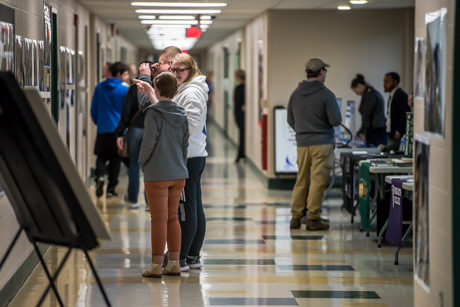
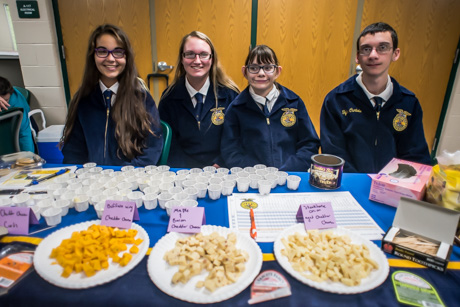
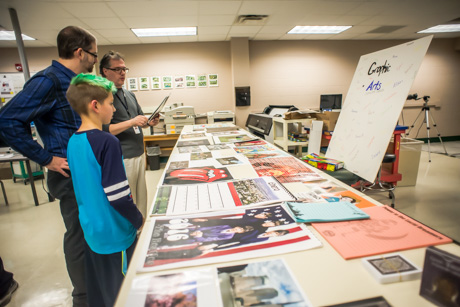
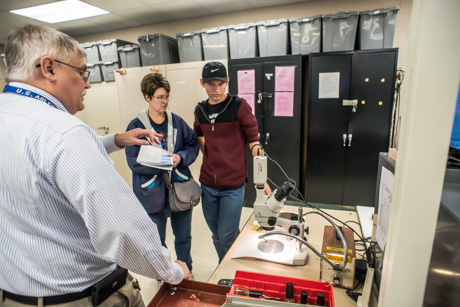

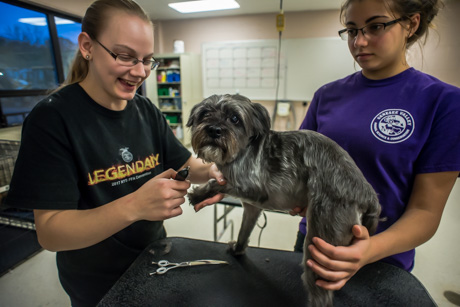
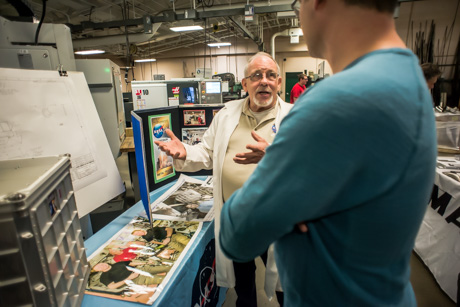
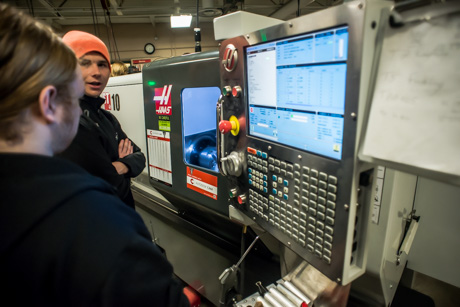
Byron-Bergen student wins Genesee County's STOP-DWI poster contest
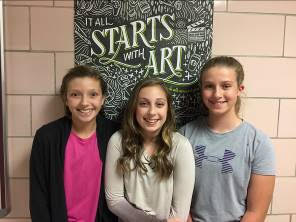
Press release:
Byron-Bergen Jr./Sr. High School seventh-grader Zoey Shepard surpassed the competition and was named Grand Prize winner in Genesee County’s annual STOP-DWI Poster Contest. Her sister, eighth-grader Grace Shepard, took First Place in the category for grades 6-8, and classmate Kendall Phillips won Third Place honors in that same group.
All three designers will be recognized at the STOP-DWI Awards Luncheon on Nov. 28 at Terry Hills Restaurant and Banquet Facility in Batavia.
The contest is sponsored by the county’s STOP-DWI Advisory Board. This year’s theme was “You can hand over your keys or your life. Make the right choice.”
Zoey Shepard’s Grand-Prize-winning poster design will be applied to T-shirts and a prominent county billboard to help raise awareness for the dangers of drinking and driving.
When the competition was announced in September, Grace Shepard, a 2016 STOP-DWI contest winner, enthusiastically promoted it to the other girls. All three designed their entries on their own time, outside of class. Art teacher Sandy Auer worked with them, guiding their discussions about what makes a great design.
“They were very serious about creating good compositions with compelling imagery and readability,” Auer said. “All three have a passion for art that is awesome to see. I really enjoy teaching them.”
Photo: Byron-Bergen Jr./Sr. High School’s STOP-DWI award-winners (l-r) Kendall Phillips, Grace Shepard and Zoey Shepard.
Oneonta's Hartwick College announces new scholarship for New York residents -- $10,000 per year without restrictions
Press release:
ONEONTA, NY—To underscore its commitment to providing an affordable education to students from the Empire State, Hartwick College officials have announced The Hartwick College Founders’ Award, a guaranteed tuition grant of $10,000 per year.
The $10,000 guaranteed grant will be awarded to each newly enrolled first-year and transfer student who is a resident of New York state. Grants will be awarded to new students beginning in the fall of 2018.
While Hartwick educates students from every state and dozens of countries, historically 75 percent of the College’s students hail from New York. Founded in 1797, and as one of the oldest colleges in the nation, Hartwick has deep ties and a commitment to the citizens of New York State.
“This new award is intended to send a clear message to families from New York state that we understand their concerns about college affordability,” said President Margaret L. Drugovich. “We chose the name ‘Founders’ Award’ as a tribute to the many generous supporters of the College who have made a Hartwick education affordable for students over these last two centuries.
"Many Hartwick alumni have told me that they could not have obtained their Hartwick education except for the generosity of others. The Founders’ Award continues that tradition.”
New students who enroll at Hartwick starting in the fall of 2018, and who remain enrolled and in good academic standing, will receive a $10,000 Founder’s Award for each year of their enrollment. Because Hartwick is committed to experiential education that has a positive, global impact, there are no eligibility income limits or post-graduation residency requirements. Students who enroll in the College’s innovative Three-Year Bachelor’s Degree Program are also eligible for this award.
The Hartwick College Founders’ Award will provide the foundation of each New York State student’s financial aid award. Students may also qualify for additional college grants, scholarships, and other forms of financial aid based upon their eligibility. No special grant application is required; students need simply apply for admission to Hartwick and file the Federal Free Application for Federal Student Assistance (FAFSA).
“The Hartwick College Founders’ Award is another example of our commitment to providing a high-quality, affordable education for our students and their families,” said Vice President for Enrollment Management Karen McGrath. “We’re pleased to offer this no-strings-attached award to the college-bound students of New York, and to continue the longstanding tradition of educating New York’s next generation of global citizens.”
# # #
Hartwick College is a private liberal arts and sciences college of 1,500 students, located in Oneonta, NY, in the northern foothills of the Catskill Mountains. Hartwick's expansive curriculum emphasizes an experiential approach to the liberal arts. Through personalized teaching, collaborative research, a distinctive January Term, a wide range of internships, and vast study-abroad opportunities, Hartwick ensures that students are prepared for not just their first jobs, but for the world ahead. A Three-Year Bachelor's Degree Program and strong financial aid and scholarship offerings keep a Hartwick education affordable.
Batavia Career and Technical Center to hold Open House Nov. 2, all are welcome
Press release:
The Batavia Career and Technical Education Center (CTE) will hold an Open House from 5 to 7 p.m. on Thursday, Nov. 2.
Students, parents and community members are invited to tour the center and discover the many skilled trades opportunities available at this facility.
Crime scene analysis, 3-D printing processes, welding applications, animal care methods, and the newest cosmetology trends are just a few of the practices students learn at Batavia CTE.
All programs housed at this campus will also be open for touring including the Batavia Academy, the Intensive Therapeutic Program, the Transition and Practical Assessment Exploration Systems Programs and other school-age special education programs.
The Batavia CTE Center is located at 8250 State Street Road. Please call (585) 344-7711 with any questions.
About CTE
The Batavia Career and Technical Education Center is a program of the Genesee Valley Educational Partnership. The Partnership operates as a Board of Cooperative Educational Services providing shared programs and services to 22 component school districts located in Genesee, Wyoming, Livingston and Steuben counties in New York state.
